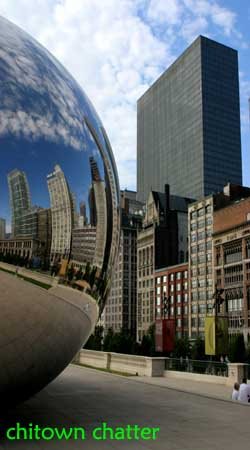Let me begin by confessing that I was mostly underwhelmed by the suggestion to attend the latest U of C orchestra concert. It's a concert featuring who, Edgar Meyer? A bass soloist? Wait, who does that?? Nothing against the double bass, but the instrument simply doesn't have the range and timbre to possibly be interesting as a solo instrument. From what I recall from middle school orchestra, the worst students were generally the ones relegated to playing bass, since those parts were the simplest and consisted mostly of straight quarter notes. Why would I want to listen to a bassist again? But the desire to look cultured, the inclusion of free tickets, and a lack of better alternatives prevailed, so I agreed to go check out the show.
The orchestra began with a romantic classic, Brahms' Variations on a Theme of Haydn. This is a gorgeous piece, and the orchestra performed it admirably, but this was nothing to write home (or blog) about. Actually, after the concert I was asked by orchestra members if I liked the Brahms, because they were worried about the audience being bored. I'm not sure what this says about the state of modern attention spans.
After this, it was time for the concert's featured soloist to emerge. Deftly carrying a double bass over his head, Edgar Meyer strode out to the front of the stage and set down his instrument with a flourish. The orchestra began to play Bottesini's Concerto No. 2 in B Minor for Contrabass and Orchestra, and as I watched Meyer attack his cadenzas, I suddenly had a newfound respect for the world's greatest living bassist.
Picture yourself standing on one foot. Now do it on tip-toes with your eyes closed. Now simultaneously juggle half a dozen balls and balance a fruit basket on your head while reciting the alphabet backwards. That task is almost approaching the level of Herculean technical difficulty exhibited by Meyer's bass playing. Sure, any virtuoso violinist can throw down speedy runs and rapid shifting between intervals, but these tasks are magnified to new heights of difficulty on a bass. After all, you have that much more distance to deal with. Meyer was polishing off jaw-dropping passages without a sweat. Harmonics? Check. Double stops? Check. This man definitely has a +18 for dexterity; little wonder he has been called the "Paganini of the bass." I bet if he wanted to, he could play triple stops. At the same time. That's right. Without a doubt, this was the most exciting orchestral soloist I have ever seen.
With a little post-concert research, I discovered that Meyer has won a slew of awards, including two Grammys for his work on Bela Fleck's Perpetual Motion and a MacArthur genius grant in 2002 (which has no application, comes with $500,000 and no stipulations on how to spend it). His work spans the gamut from Bach to bluegrass, and he has recorded with such classical heavyweights as Yo-Yo Ma and Joshua Bell. Meyer's bass is customized with a lower than normal bridge, which makes it easier to press down on the strings for upper range notes. The fingerboard is also extra long, which extends Meyer's range to a little over 5 octaves. Most bass players stick with a range of 2-3 octaves. And horror of horrors, Meyer's fingerboard includes dots to mark the placement of notes. Beginning string players often mark their instruments with tape or stickers to guide their fingers, but seeing this on a professional instrument is practically sacriligious. With the speed at which Meyer's fingers must move though, I am willing to give him a pass on the extra intonation guidance.
The second half of the program featured one of Meyer's compositions. Truly, it takes cojones to both play and write half of a program. Meyer's Concerto No. 1 in D Major for Double Bass and Orchestra includes three movements, titled very simply after their metronome markings: quarter-note = 109, quarter-note = 74, quarter-note = 180. This is undoubtedly a brilliant idea, far superior than titling movements after a subjective term like "allegro." The concerto went on to showcase Meyer's combination of classical training and Tennessee roots, with passages that exhibited bluegrass influences.
At the end, to thunderous clapping and loud hoots, Meyer took a bow and left the stage. And then came back and did it again. And again. And again and again. The audience was on their feet and not getting off the applause train any time soon. Finally, after Meyer's umpteenth trip back and forth from the stage, we gave up on the possibility of an encore and began filtering out of Mandell Hall. A reception with trays of hors d'oeuvres was set up in an adjacent room and we beelined in that direction. Note to Cornell: the CSO and WE concerts ought to be catered with fruit trays, cookies and mozzarella, basil & tomato skewers. This will greatly improve our US News ranking, I swear.
As he autographed programs at the reception, Meyer was warm and self-effacing, thanking audience members and heaping praise upon the orchestra. With an unruly mop of hair and '30s-style suspenders, I was reminded of a humble John C. Reilly. And if anyone is still considering switching to a music major, Meyer commented that at one point, he had been a math major before switching. I suppose it all worked out in the end, eh?
Subscribe to:
Post Comments (Atom)




No comments:
Post a Comment